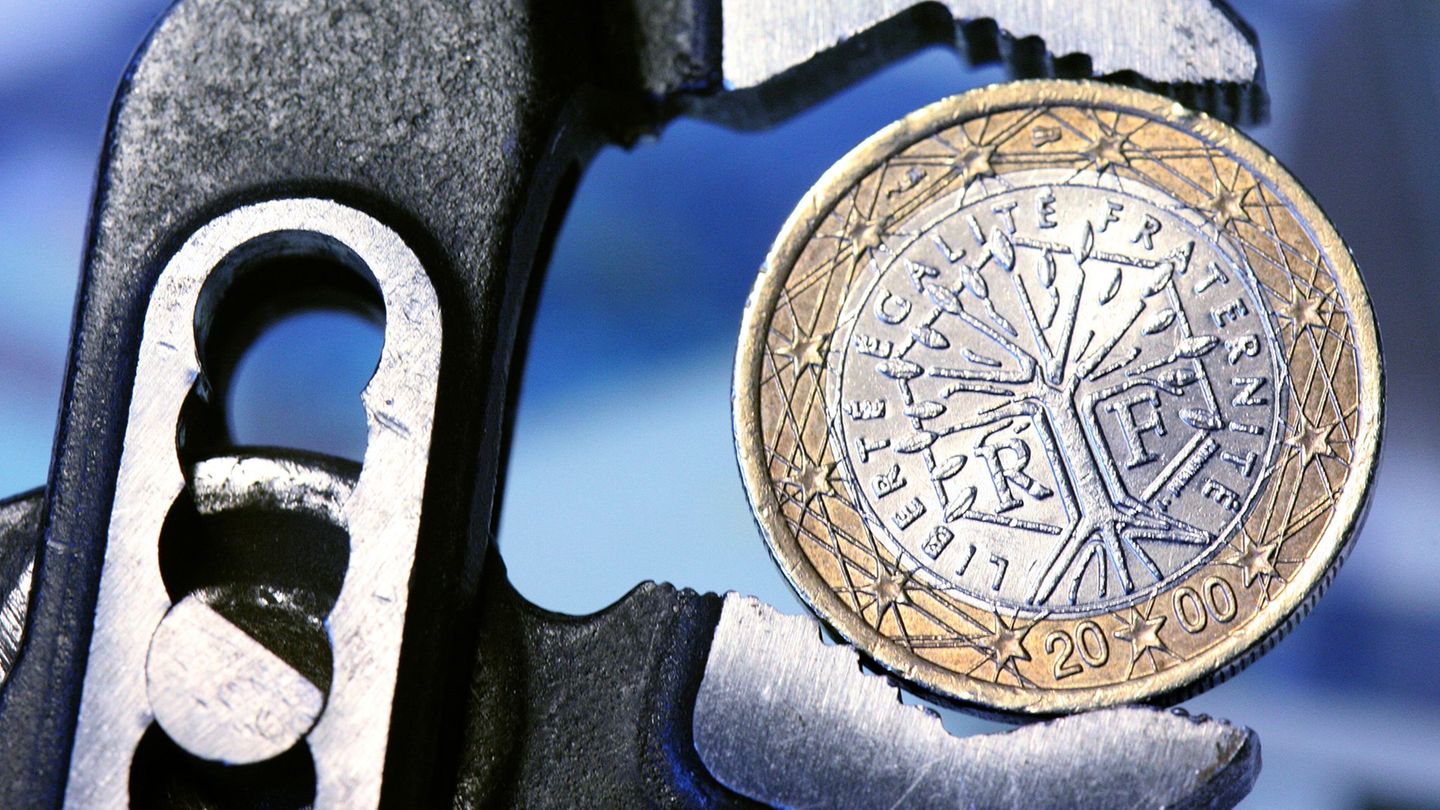As a rule, the weight of a package is written next to the sticker with the address: small and black and white. Much too inconspicuous and hardly visible when loading and unloading quickly, complain trade unionists.
Whether animal feed, garden furniture or sports equipment: Particularly heavy shipments cause displeasure in the parcel industry.
The transport could harm the health of employees in sorting centers and in delivery, it was said on Friday by the Verdi union and the works councils of the parcel service providers operating in Germany. Because if the delivery person bends down and, unsuspectingly, catches a very heavy chunk, it falls on his back – if this happens again and again, there is a risk of health problems. To mitigate this, the employee side is demanding large kilogram labels on all six sides of a package.
“It would be very helpful if you can recognize heavier shipments,” said Verdi Vice President Andrea Kocsis at a press conference on the state of the parcel industry in Berlin. You don’t look at a package to see whether it contains a heavy metal part or a light material. If the employees saw the weight information quickly and easily, they could adjust their movement sequence accordingly. “That would be extremely relieving.”
The transport of heavy parcels in Germany’s parcel industry has been common practice for a long time, but the number is likely to have increased during the corona pandemic. This is also due to the fact that, in view of interim lockdowns or because of the high number of infections, consumers buy products on the Internet that they bought in stationary stores before the pandemic, for example chairs, glass tables, dog food or dumbbells for training at home. Let’s take the example of a box loaded with several dozen spaghetti packs: It’s not very large, but significantly heavier than other boxes of its size. A quick rise could take revenge.
“A heavy package should become two”
The weight of the parcel is usually already stated on one side – but it is quite small and in black and white. Much too small, says DPD works council member Gabriel Javsan – there is not enough time to first find the right page with the imprint, read the small print and only then pick up the package. In addition: “The weight has to be reduced: a heavy package should become two.”
The employee representative Thomas Held from Deutsche Post DHL requests a kilo indication on each of the six sides of the package. Then the deliverer would know immediately, regardless of how the package is in the vehicle when it is unloaded. “It has to be a label that is really easy to recognize.”
Another change would also improve the working conditions of the deliverers from the point of view of the union: Parcels should be considered bulky goods from a weight of 20 kilos, currently the limit is 31.5 kilos. So there would be more bulky goods that the logisticians would have to transport.
UPS works council Andreas Kassler explains the advantage of this using the example of a kitchen appliance that has to be dragged to the customer on the fifth floor: If it is considered bulky goods, two deliverers would come and have more tools to carry it upstairs. The hard work would be distributed over four shoulders, so to speak. The catch from the companies’ point of view: The transport is becoming more expensive, which is likely to be a major disadvantage in the competitive parcel industry.
Verdi is hoping for the Federal Ministry of Labor
According to Verdi Vice Kocsis, all parcel service providers in Germany have an interest in lowering the bulky goods limit, after all, “these weights are extremely burdensome”. But because every single company feared a competitive disadvantage if they progressed alone, everything would stay the same. Therefore, Kocsis hopes that the Federal Ministry of Labor will initiate a corresponding change. “From our point of view, it has to be regulated that way because the companies apparently can’t do it alone.”
And what does the management of the parcel service provider say? “The maximum weight of a parcel of 31.5 kilograms is an established market standard,” says a DHL company spokeswoman. Particularly heavy shipments only made up an “extremely small proportion of our shipment volume”. “In our pricing, we set targeted incentives for our business customers to reduce the number of heavy shipments and, for example, to send two lighter packages instead of an expensive heavy shipment,” says the spokeswoman.
In addition, business customers would have to label heavy shipments over 20 kilos – either with the note “Caution, heavy parcel” on the shipping label or with red “Up to 31.5 kilos” stickers on all six sides. From the employee side, however, it said that this was not enough, especially since parcels weighing a little less than 20 kilos were heavy.
The Federal Association of Parcel and Express Logistics (Biek) also spoke up on Friday. A spokeswoman pointed out that the industry is tackling the issue of heavy parcel loads and, for example, is relying on the ergonomic optimization of vehicles.
Source From: Stern
Jane Stock is a technology author, who has written for 24 Hours World. She writes about the latest in technology news and trends, and is always on the lookout for new and innovative ways to improve his audience’s experience.




